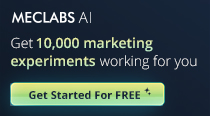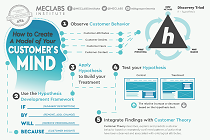June 26, 2003
How To
SUMMARY:
Marketers' email newsletters are often afflicted with \"sophomore slump.\" You do ok at the start and then you run out of editorial steam, and/or your readers get tired of you.
How can you get readers to continue opening and clicking for years? We asked Red Hat, a high-tech company with 850,000 adoring newsletter readers. (It generates decent sales leads too.) Includes samples.
|
|
by Reporter, Lynda Partner
The average email newsletter sent for marketing purposes gets
about a 35% open rate. If it is exceptionally well written and
many of the names on the list are fairly new.
Since 1999, Linux software provider Red Hat has sent out a
monthly newsletter that consistently gets higher than average
open rates, ranging from 45% to 90%.
No, it is not a personalized newsletter, or one sent to just a
tiny niche audience.
Red Hat's 850,000 subscribers include everyone from Fortune 500
CIOs to geeky students, many of whom have been on the list for
years.
We asked Red Hat's Senior Marketing Communications Manager Chris
Grams how they have gained such fervent long-term loyalty from this
diverse list for a newsletter that is, at its heart, a sales lead
generation device.
Grams says, "Give your readers what they want, not what you want.
It's OK to guide them, but it should be their newsletter as much
as yours."
What did Red Hat discover 850,000 IT pros and software fans
really want?
Seriously techie tips written in seriously techie language
coupled with a lot of irreverent humor.
In fact, at launch in 1999, the newsletter was mostly geeky
humor. As the world changed, and readers moved up the
corporate ranks, the newsletter's tone matched their growing
seriousness. Today the humor is still there, but it is below the
fold. (See link below to compare the very first newsletter to
the way it looks today.)
Grams says he thinks the humor helps build an emotional
connection that keeps readers clicking to open.
"You know, whether he's a corporate guy or a sys admin, at the
end of the day he's still a guy. He laughs at the same jokes,
likes the same zany stories. Why write differently to him
because he's reading this in a corporate setting?"
The two most interactive sections of the newsletter consistently
get the highest click rates:
Most popular: Ask Shadowman
This Q&A forum gives answers to highly technical questions
with a dash of cheeky humor thrown in.
Second most popular: Tech Question Contest
Readers compete to answer a tough question, and winners names
are posted in the next issue. Grams says the response rate to
the Contest is always phenomenal. He has to schedule staffers
to be available to deal with the flood of responses.
Notably, he often sees the same names appearing as
winners year after year. Winning a contest certainly breeds
loyalty.
Aside from highly appealing content, Grams says publishing
extremely consistent content is critical to keeping your open and
click rates high.
Although lots of folks at Red Hat contribute ideas and tips for
the newsletter, just a single editor is responsible for rewriting
and publishing the newsletter, so everything flows in a
consistent voice.
No contributed content is ever used verbatim.
This voice, in effect, has become as much a part of Red Hat's
brand image to loyal customers and readers as the Company's logo
is.
Grams says the marketing team often consider moving to
personalized content, matching sections of the newsletter to each
individual’s stated preferences, in order to keep open rates and
reader loyalty high. It is a tactic that has been proven to work
for many other companies, from Brooks Sports to Franklyn Covey.
However, Red Hat hesitates, fearing that they would end up with a
disconnected group of articles, and losing “the voice” that
readers adore.
They have also broken a major Best Practices rule by keeping their
subject line consistent for four years straight and counting.
The newsletter has always come From: Red Hat, and the subject
line is always Subject: Under the Brim | Red Hat | Month Year.
Grams believes that his readers expect this consistency and that
any attempt to increase open rates by varying the subject line
would backfire.
We advise most marketers to keep the first part of their subject
line consistent, but to vary the second half with teaser copy.
Repeating the entire thing every issue is a tactic that can only
work for a very few marketers with very exceptional newsletters.
(Kids, do not try this at home.)
In order to generate sales leads from all this good will, every
issue of Under the Brim also includes an extensive list of offers
for white papers, a webcast offer, and offers for 13 more
specialized newsletters such as Small Business Solutions to
Legislative Alerts.
Grams figures that when long-term readers are in the right job,
with the right purchasing authority and product interest, they will
take the next step to enter Red Hat's sales funnel.
It works. For example, 400-800 people will sign up to attend
a typical webcast, 80-150 will actually show up for it, and then
the sales team begins to communicate with them to close the loop.
The only cloud in the sky is email filters.
Although Under the Brim has consistently pulled up to 90% open
rates in the past (even as recently as last year), Grams says in
recent months opens are as low as 45%.
The Company has invested in filter avoidance, including testing
issues with a filter simulator, their email broadcast firm
provides, before sending them. Plus, Gram watches a variety of
test inboxes, such as his personal Yahoo account, to make sure
the bigger systems are not stopping issues.
There has been some progress, but not as much as Grams would like
to see. It is a battle he shares with all permission marketers.
Link to samples of the evolving newsletter (fun):
http://www.marketingsherpa.com/rh/ad.html









